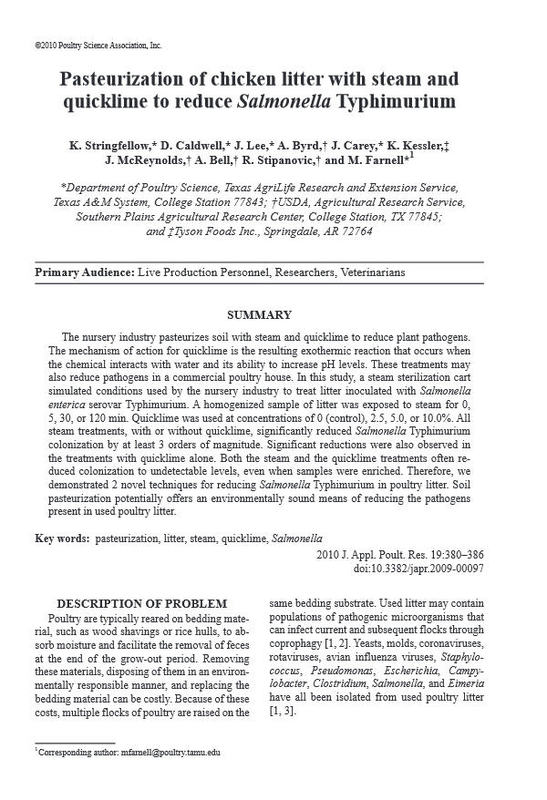Pasteurization of chicken litter with steam and quicklime to reduce Salmonella Typhimurium
Title
Pasteurization of chicken litter with steam and quicklime to reduce Salmonella Typhimurium
Creator
Date
Subject
Excerpt
The nursery industry pasteurizes soil with steam and quicklime to reduce plant pathogens. The mechanism of action for quicklime is the resulting exothermic reaction that occurs when the chemical interacts with water and its ability to increase pH levels. These treatments may also reduce pathogens in a commercial poultry house. In this study, a steam sterilization cart simulated conditions used by the nursery industry to treat litter inoculated with Salmonella enterica serovar Typhimurium. A homogenized sample of litter was exposed to steam for 0, 5, 30, or 120 min. Quicklime was used at concentrations of 0 (control), 2.5, 5.0, or 10.0%. All steam treatments, with or without quicklime, significantly reduced Salmonella Typhimurium colonization by at least 3 orders of magnitude. Significant reductions were also observed in the treatments with quicklime alone. Both the steam and the quicklime treatments often reduced colonization to undetectable levels, even when samples were enriched. Therefore, we demonstrated 2 novel techniques for reducing Salmonella Typhimurium in poultry litter. Soil pasteurization potentially offers an environmentally sound means of reducing the pathogens present in used poultry litter.
Relation
Journal of Applied Poultry Research
Volume 19
pp. 380-386
 An official website of the United States government.
An official website of the United States government.


